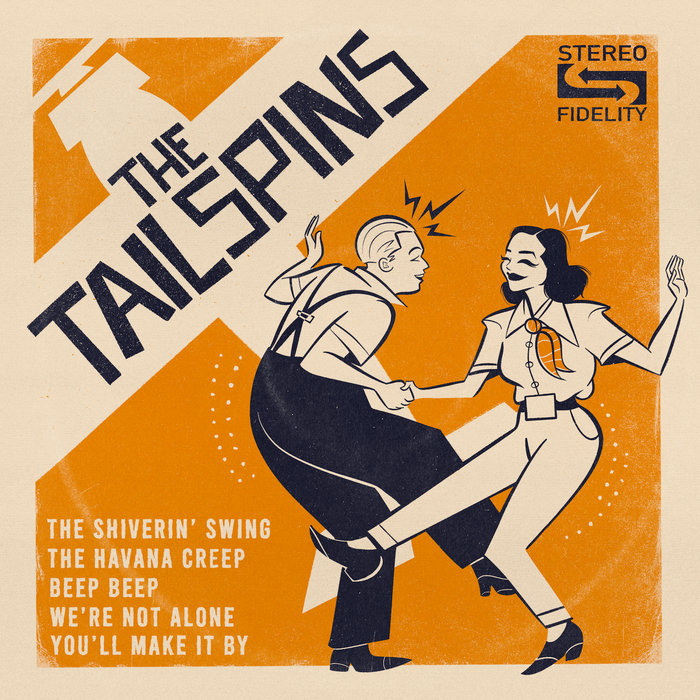
The Shiverin’ Swing – The Tailspins
this blog is GROOVY – check out great Soul, Funk, Jazz, Hip Hop, Bass, Breaks , Reggae, House n many more TUNES
Hey there, blues fans! Let’s take a groovy ride through the streets and backroads of pre-war blues. This funky genre isn’t just about deep emotions and sad tunes; it’s got stories, twists, turns, and some downright hilarious moments too! Grab your favorite drink, kick back in your chair, and let’s dive into the vibrant history of this iconic musical style.
Pre-war blues refers to the styles of blues music created before World War II – roughly from the late 19th century until around 1941. It’s raw, it’s real, and often filled with heartache but also an undeniable sense of rhythm that makes you want to tap your foot (or dance like nobody’s watching).
This period saw the rise of artists who resonated with the struggles and joys of life—everything from love lost to whiskey-filled nights—and they did it all while making us smile along the way.
The roots of pre-war blues dig deep into African American communities in the Deep South. You had folks using their voices as instruments—a mix between work songs, spirituals, field hollers, and folk music. This blend was like a musical gumbo simmering away on a Sunday afternoon!
As African Americans migrated after WWI looking for better opportunities—some heading up north—so did their sound. From ragtime to gospel influences: every strum on that guitar carried both pain and joy.
Now let’s talk about some major players during this time—who made waves with their soulful sounds:
Robert Johnson: Often hailed as one of the greatest musicians ever (though he only recorded around 29 songs!), his mysterious life included tales about selling his soul at a crossroads for success—the ultimate “Blues Myth.”
Charley Patton: Known as “the Father of Delta Blues,” Charley didn’t just play music; he performed it like a theatrical production! He was such an entertainer that sometimes folks would forget they came for just the tunes.
Bessie Smith: Queen Bess ruled early jazz-blues crossover with her powerful voice. One funny anecdote? She once popped off when asked why she always sang sad songs (“Who wants to hear happy songs?”) That’s right—when she felt down…she put it all out there!
If there’s something pre-war blues is known for—it’s that mesmerizing slide guitar technique! Musicians would use anything from metal bottles to spoons to create those sweet slinky sounds. Legend has it that B.B King shifted gears by using an old Coca-Cola bottle instead—it fit perfectly over those strings!
And can we talk about how many musicians faced strange mishaps while performing? For instance:
Muddy Waters once set his guitar on fire during a performance because he wanted “to get lit” literally!
Blind Lemon Jefferson earned his name not just because he was blind but primarily due to him carrying lemons wrapped in cloth wherever he went—to sell them! Who knew fruit could be so fruitful?
Kicking off any discussion about influence leads us straight towards Chicago’s urban scene post-Great Migration where acoustic guitars traded places with electrics leading many artists forward into new territories but holding onto those catchy rhythms born down south.
Even popular acts today swear by what these early composers gave birth too including rock n’ roll legends like Led Zeppelin or Eric Clapton whose riffs echo primitive echoes re-imagined most beautifully rough-around-the-edged way possible!
Can you picture Jimmy Page wailing out “Whole Lotta Love” unaware someone might have done something similar without electricity decades earlier? That part cracks me up—but hey that’s how stories live through generations right?!
With record labels starting popping up left ‘n’ right around mid-late ’20s…many tiny labels began finding gems inside juke joints across America releasing recordings so people could bring home these good vibes even if they didn’t see performances first-hand anymore—which meant more money—for everyone involved…well almost…
Funny moment alert here too:
Some records were released under pseudonyms & nicknames galore? Turns out artist Tampa Red wasn’t named after a big red noodle bowl but rather came from Tampa Bay (clever huh?). Then there’s Son House—a pioneer himself who spent nearly half-a-century recording under various aliases despite hardly having enough change in pocket at times getting misunderstood over gigs—even misspelled by numerous publishers trying convince listeners someone different played tracks complete marketing blunder #EpicFail!!
As we moved toward WWII everything changed—including our beloved pre-war blues transitioning slowly yet surely toward postwar styles introducing R&B paving roads ultimately leading Rock-and-Roll explosion later on defining generational eras ahead full throttle throughout history still affecting artists today shaping modern genres far & wide keeping its essence alive eventually spinning new directions inspired by previous works building onto legacy never forgotten!!!
So next time you give your ears some southern soul flavors remember each chord carries countless untold stories tied-that together beyond sorrow alone crafting pure joy mixed deeply ingrained authenticity swaying real lives lived day-to-day long before Spotify playlists ruled world!!
That my friends is quite groove-heavy tale embracing everything associated within realm known popularly as “Pre-War Blues.” Until next jam find yourself dancing freely knowing it’s okay laugh sometimes even amidst heartfelt moments genius shared alongside humor intertwined forever marking influential path traveled musically speaking WOW!!! 🎶✌️

The Shiverin’ Swing – The Tailspins